The Research Room is not open for browsing. Research Room staff are answering local history questions. Please email us at museum@edcgov.us with the details of your question and Museum staff will be in touch.
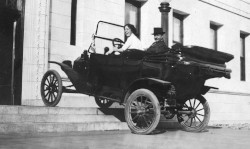 The El Dorado County Historical Museum, located at 104 Placerville Drive in Placerville (next to the Fairgrounds,) has been a place to see and learn about the rich history of El Dorado County since 1974. With the mission to preserve and interpret the county’s history through artifacts and documents, the County Museum presents exhibits, tours, research and special programs for the public to learn from and enjoy.
The El Dorado County Historical Museum, located at 104 Placerville Drive in Placerville (next to the Fairgrounds,) has been a place to see and learn about the rich history of El Dorado County since 1974. With the mission to preserve and interpret the county’s history through artifacts and documents, the County Museum presents exhibits, tours, research and special programs for the public to learn from and enjoy.
At the County Museum
Artifacts from the County’s past reflect the people, activities and events that occurred here. Displays start with a collection of baskets and tools made by skilled artists of the Miwok, Nisanan and Washoe Native American people, and cover the Gold Rush, the logging and lumber industry, transportation, and some of the historical figures such as Snowshoe Thompson, the Goat Doctor and John Studebaker, famous for his gold-rush era wheelbarrows. There is an Old General Store, fine household furnishings, school desks and household items from over 100 years ago, such as the Icy Ball cooler.
Mining equipment, wagons and railroad artifacts can be found in the Museum’s Yard, including the Diamond & Caldor’s narrow gauge Shay Locomotive #4 undergoing restoration.
The County Museum has special exhibits throughout the year. Currently, the exhibit “Women of Influence: women making history in El Dorado County” highlights some of the notable women in the county’s history with displays of dresses from the 1890s – 1930s, historical photographs and documents about their lives. Another special exhibit is “What Miners Left Behind,” artifacts found in and around early gold rush era mining camps.
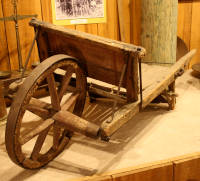
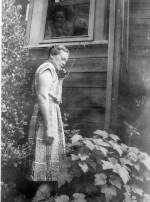
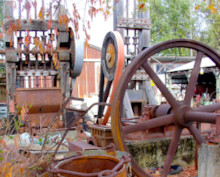
Museum Archives and County Research Room
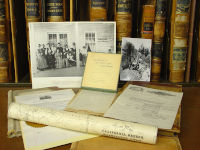 The El Dorado County Historical Museum maintains the County’s Research Room where local records and archives are kept and made available to the public. There are over 27,000 historical photographs, historical maps, court records, and genealogical information covering El Dorado County history. Please contact us and staff and volunteers will try to answer your questions. You may also submit a research request to have museum staff research a specific topic, area, property, etc. related to El Dorado County. Please include a description or as much detail as you can of the information you are looking for. Museum staff and volunteers will answer research requests in the order they are submitted.
The El Dorado County Historical Museum maintains the County’s Research Room where local records and archives are kept and made available to the public. There are over 27,000 historical photographs, historical maps, court records, and genealogical information covering El Dorado County history. Please contact us and staff and volunteers will try to answer your questions. You may also submit a research request to have museum staff research a specific topic, area, property, etc. related to El Dorado County. Please include a description or as much detail as you can of the information you are looking for. Museum staff and volunteers will answer research requests in the order they are submitted.
El Dorado Western Railroad
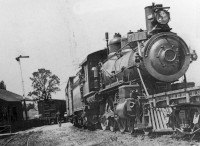 The El Dorado Western Railroad operates on the historic Southern Pacific Placerville Branch tracks. Hop on and take a ride on a vintage railroad inspection car!
The El Dorado Western Railroad operates on the historic Southern Pacific Placerville Branch tracks. Hop on and take a ride on a vintage railroad inspection car!
As an extension of the oldest railroad west of the Mississippi, the “Placerville Branch” of the Southern Pacific Railway was completed in 1888 and carried passengers and freight between Sacramento and Placerville. Lumber, fruit, and other produce was hauled to distribution centers in Sacramento, and then sent all over the country by rail. Now the County Museum’s El Dorado Western Railroad operates on the track in Shingle Springs and in El Dorado. This volunteer-operated railroad offers rides on railroad inspection cars to the public as they work to restore rolling stock and repair the tracks in anticipation of operating a train.
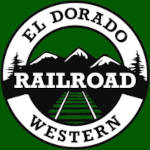 See current location, schedule and ticket information on the El Dorado Western Railroad page.
See current location, schedule and ticket information on the El Dorado Western Railroad page.
Note: The El Dorado Western Railroad cannot be boarded at the Museum exhibit grounds, but nearby at one or more of the historic train depot locations.
Museum Exhibits and Artifact Collection
 Take a stroll through El Dorado County's history! The museum features a variety of permanent indoor and outdoor exhibits and artifacts on display.
Take a stroll through El Dorado County's history! The museum features a variety of permanent indoor and outdoor exhibits and artifacts on display.
The museum also prepares multiple special exhibits that can be viewed throughout the year.
Museum Archives and County Research Room
The County Research Room, located at the museum, Contains over 27,000 historical photographs, maps, court records and genealogical information covering El Dorado County history.
Submit a research request to have museum staff research a specific topic, area, property, etc. related to El Dorado County.